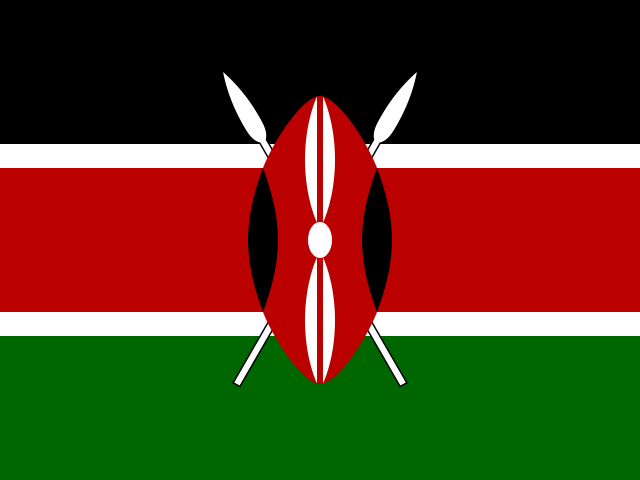
Kenya
Kenya’s media landscape is being shaped by a convergence of economic discontent, shifting political dynamics, and the rise of decentralised digital activism. Mass protests against the Finance Bill in 2024 underscored the growing influence of social media in shaping public discourse while exposing deep-seated fractures in trust towards traditional media.
Kenya witnessed a seismic moment in its political and media history in 2024. Demonstrations led by Gen Zs (those born between 1997 and 2012) shook the government and the media, particularly due to the strategies employed by protesters to communicate and organise civic action. The movement largely shunned traditional media, opting instead for social media platforms such as X, TikTok, and WhatsApp, where it deployed hashtags such as #OccupyParliament and #RejectFinanceBill2024 to mobilise young people and others discontented with government policies.
Unlike previous protests led by political figures or civil society organisations, these leaderless demonstrations relied on decentralised digital strategies. Live-streamed videos on TikTok allowed the demonstrators to bypass mainstream media gatekeeping and censorship, documenting police crackdowns in real time, countering government narratives, and drawing international attention. X Spaces facilitated instant live discussions, with President William Ruto himself joining one in an attempt to placate protesters. WhatsApp groups provided logistical coordination, including updates on safe routes, legal aid, and first-aid support. This digital mobilisation blurred the lines between journalism and activism, as ordinary citizens assumed the role of real-time reporters.
The protests were met with significant pushback from the state. President Ruto described them as ‘treasonous events’ and announced a crackdown on ‘orchestrators and abettors of violence’. Following his statement, journalists covering the demonstrations faced increasing harassment, both online and offline. In one of the most serious incidents, a journalist was shot three times while reporting on protests on 16 July 2024.1 Several reporters were detained, attacked, or had their equipment destroyed. The state’s response to digital activism has raised alarm over increasing restrictions on free expression.
Beyond physical attacks, mainstream media houses faced mounting pressure to align their coverage with the government’s narrative. Political pressure and economic repercussions followed, with major advertisers such as Safaricom withdrawing ad revenue from the Nation Media Group following reports implicating the company in state surveillance of protesters and breaches of user privacy. Stories published by Nation had indicated Safaricom’s involvement in controversial healthcare deals that were also the subject of protests.2
Meanwhile accusations of self-censorship, political bias, and corporate influence led many Kenyans to turn to alternative platforms such as Africa Uncensored for independent reporting. Social media influencers were also increasingly relied upon for news and analysis, as individuals concerned about the independence of mainstream media sought out alternative voices on platforms like X, TikTok, and YouTube.
The impact of Gen Z’s media strategies is evident in the declining consumption of broadcast, print, and online media. According to our study, which is based on a survey sample of mainly English-speaking, online news users, the percentage of people who said they watched Citizen TV last week dropped from 76% to 68%, while Daily Nation saw a decline from 59% to 51%. This trend extended to online media as well, with market leader Tuko.co.ke also falling back.
Beyond political pressures, economic hardships have severely impacted Kenya’s media industry. Legacy outlets face declining revenues due to reduced advertising spending, shifting audience preferences, and the proliferation of free online content. Media houses listed on the Nairobi Securities Exchange, including Standard Group and Nation Media Group, reported financial struggles, with Standard Group journalists going months without salaries. The Kenya Union of Journalists threatened industrial action over unpaid wages, further highlighting the precarious state of the industry. Newsroom downsizing and budget cuts have led to reduced investigative capacity, forcing journalists to work under increasing constraints.
The resilience of Kenya’s media industry is being tested on multiple fronts. The increasing use of social media, particularly X, WhatsApp, and TikTok, as primary sources of information challenges the role of traditional news outlets. Meanwhile, fact-checking organisations such as PesaCheck and Africa Check play a crucial role in countering misinformation, as both state and non-state actors continue to flood digital spaces with disinformation, deepfake videos, and manipulated narratives.
As Kenya heads towards the 2027 general elections, digital news consumption is expected to consolidate further. However, concerns over misinformation, press freedom, and media sustainability persist. While digital platforms have democratised information and challenged traditional gatekeepers, the financial viability of quality journalism remains in question. The future of Kenya’s media landscape will be defined by its ability to navigate these pressures while maintaining editorial independence and public trust.
Catherine Gicheru
Director, Africa Women Journalism Project
George Nyabuga
Associate Dean and Associate Professor of Media and Journalism, Aga Khan University’s Graduate School of Media and Communications
Methodology note
These data are based on an online survey of mainly English-speaking, online news users in Kenya – a subset of a larger, more diverse, media market. Respondents were generally more affluent, younger (18–50 only), have higher levels of formal education, and are more likely to live in cities than the overall Kenyan population. Findings should not be taken to be nationally representative.
Trust in news overall
65%
(+1)
3/48
Overall trust in the news (65%) is relatively high compared with other countries in our survey, though a little lower with under-35s. Many of the most popular commercial brands such as Citizen, NTV, and the Daily Nation are trusted by around 90% of our sample. This is a reflection of the (still) largely independent reputation of most Kenyan media, despite growing economic and political pressures.
RSF World Press Freedom Index
117/180
Score 49.41
Measure of press freedom from NGO Reporters Without Borders based on expert assessment. More at rsf.org
Share news via social, messaging or email
51%
Footnotes
1 See e.g. Mercy Koskei. https://nation.africa/kenya/counties/nakuru/nakuru-journalist-shot-by-police-nobody-can-convince-me-i-was-not-the-target--4695820
2 See e.g. Lilys Njeru. https://nation.africa/kenya/health/the-untold-toll-of-protests-on-healthcare-system-4667868

